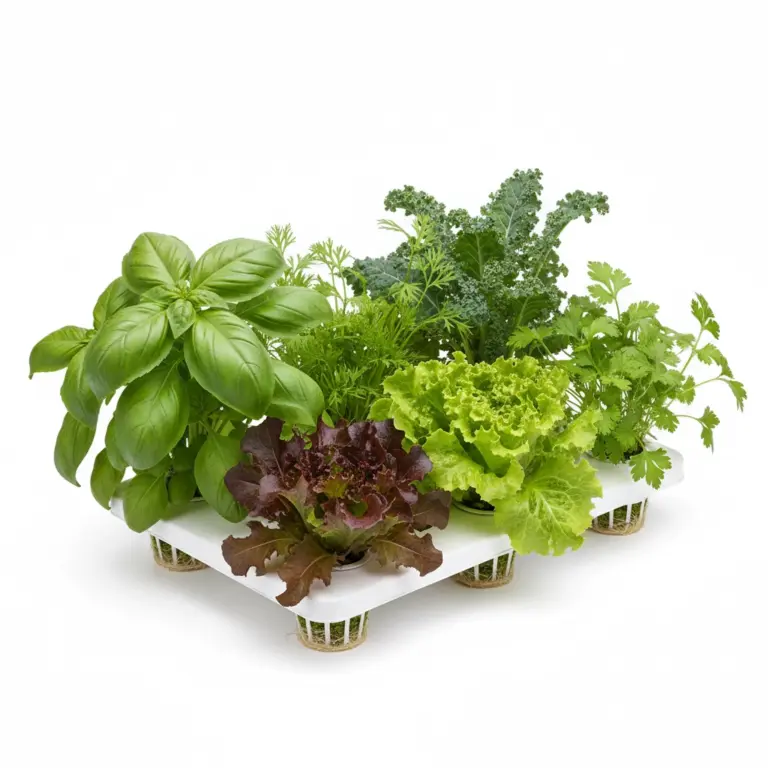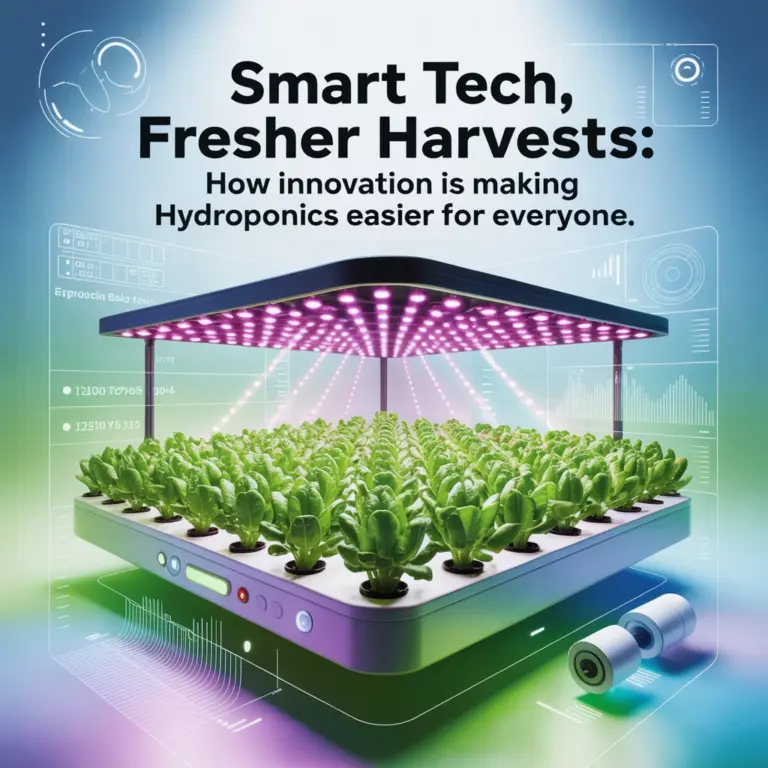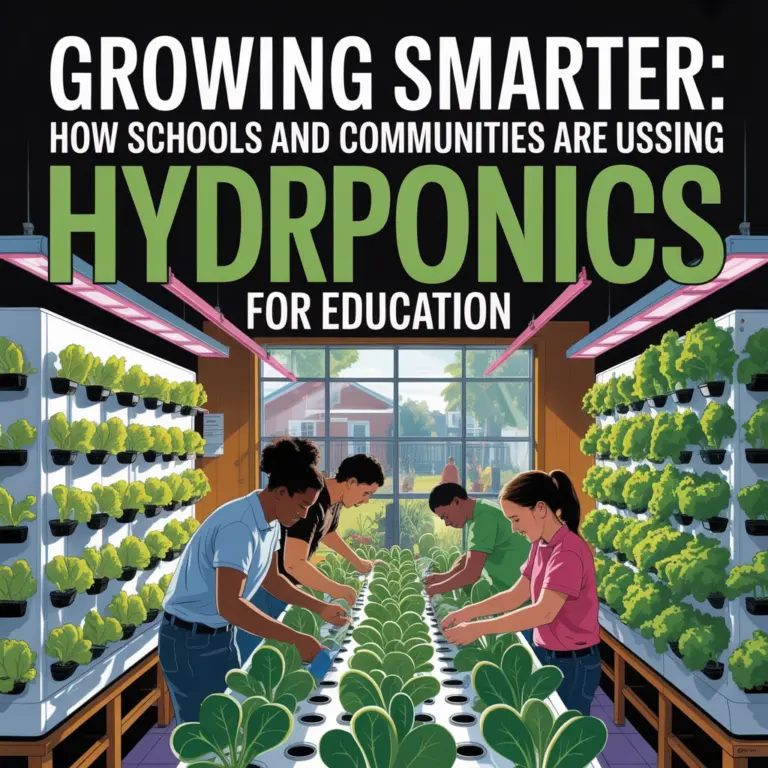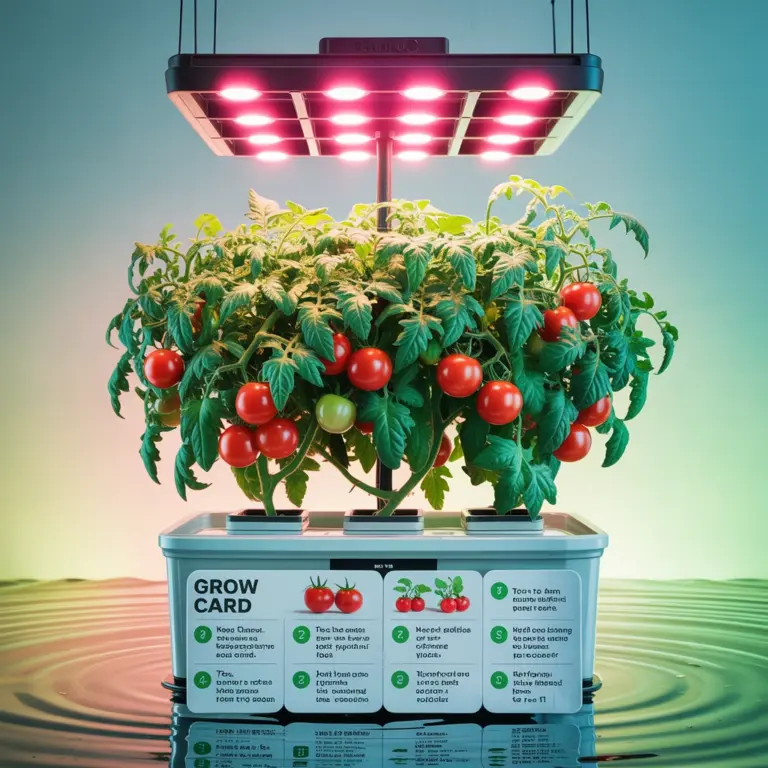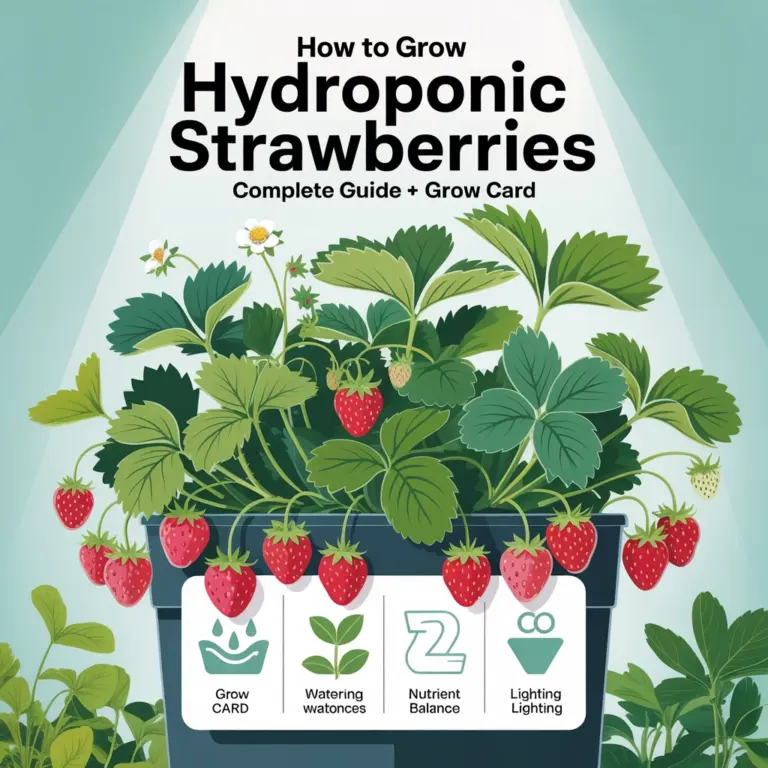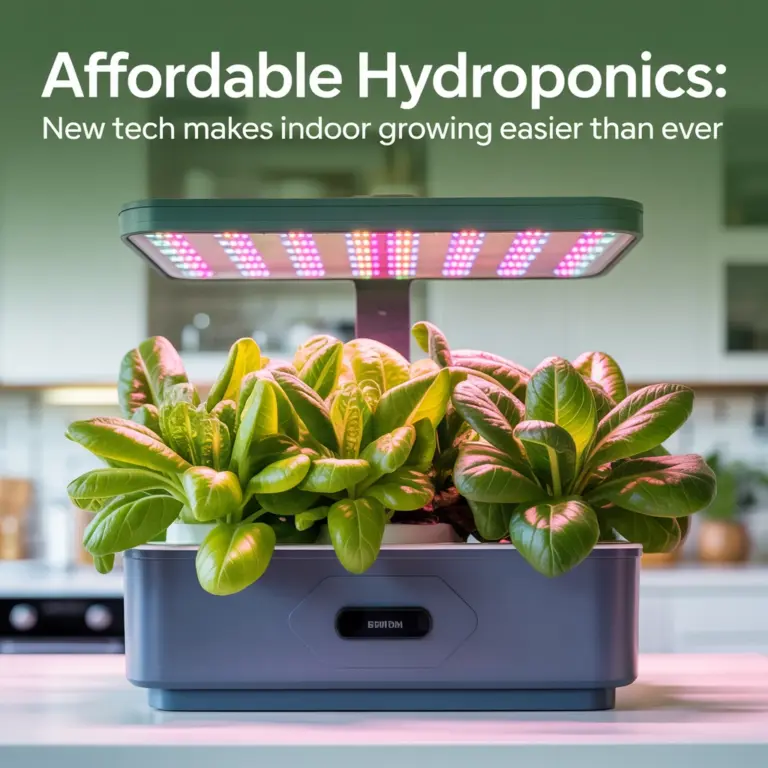How to Grow Hydroponic Basil: Complete Guide + Grow Card
Growing basil hydroponically is one of the most rewarding experiences you can have as an indoor gardener. This aromatic herb not only fills your space with incredible fragrance but also grows faster and produces more leaves than traditional soil methods. Whether you’re looking to supply your kitchen with fresh herbs year-round or planning to scale up for commercial production, hydroponic basil offers consistent results with proper care.
Why Choose Hydroponic Basil
Hydroponic basil grows 30-50% faster than soil-grown plants, produces higher yields, and gives you complete control over growing conditions. You’ll eliminate soil-borne pests and diseases while enjoying fresh harvests every few weeks. Plus, there’s nothing quite like the intense flavor of freshly picked basil that’s been grown in optimal conditions.
Selecting Your Hydroponic System
Deep Water Culture (DWC) works exceptionally well for beginners growing basil. Set up your reservoir with an air pump and air stone to keep the nutrient solution oxygenated. The constant access to nutrients and oxygen promotes rapid root development and vigorous growth.
Nutrient Film Technique (NFT) systems are perfect for continuous production. The thin film of nutrient solution flowing past the roots provides consistent feeding while preventing waterlogged conditions. NFT works particularly well when growing multiple basil plants simultaneously.
Media-based systems using expanded clay pebbles or perlite offer excellent drainage and root support. These systems work well for larger basil varieties that need more structural support as they mature.
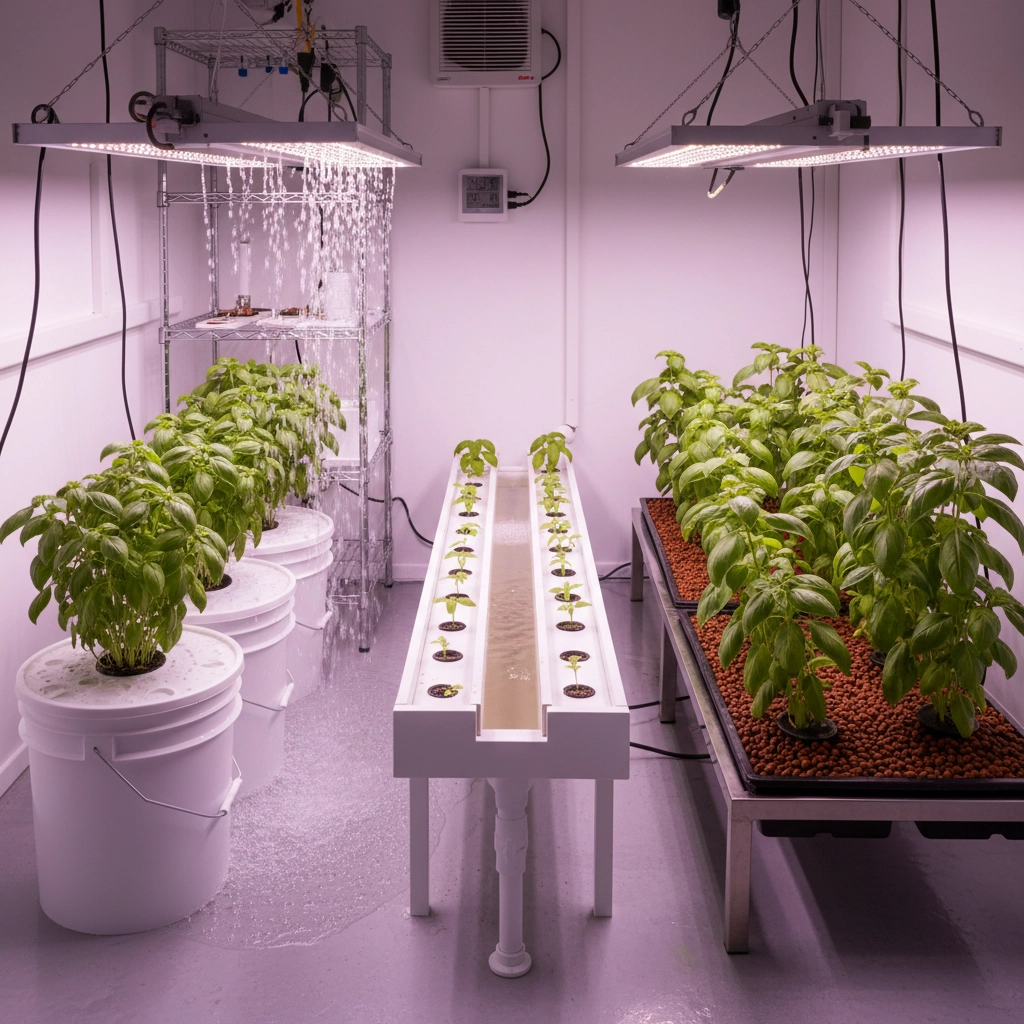
Choosing the Right Basil Varieties
Sweet Genovese remains the classic choice for most growers. It produces large, tender leaves perfect for pesto and Italian dishes. This variety responds exceptionally well to hydroponic conditions and maintains excellent flavor profiles.
Purple Ruffles and Red Rubin add visual appeal to your growing system while providing unique flavors. These colored varieties often have slightly spicier notes compared to green basil.
Lemon basil and Thai basil offer distinct flavors that command premium prices if you’re growing commercially. These specialty varieties thrive in controlled hydroponic environments.
For beginners, start with Genovese or Italian Large Leaf varieties as they’re forgiving and produce consistent results.
Starting from Seeds
Begin with quality seeds from reputable suppliers. Fresh basil seeds have higher germination rates and produce stronger seedlings.
Germination Setup: Use rockwool cubes, rapid rooter plugs, or similar starting media. Place 2-3 seeds per cube at a depth of approximately ¼ inch. Keep the growing medium consistently moist but not waterlogged.
Environmental Conditions: Maintain temperatures between 70-75°F for optimal germination. Provide gentle lighting using fluorescent or LED grow lights positioned 6-8 inches above the seed trays.
Timeline: Expect germination within 5-10 days under proper conditions. Once seedlings develop their first set of true leaves, thin to one plant per cube by removing weaker seedlings.
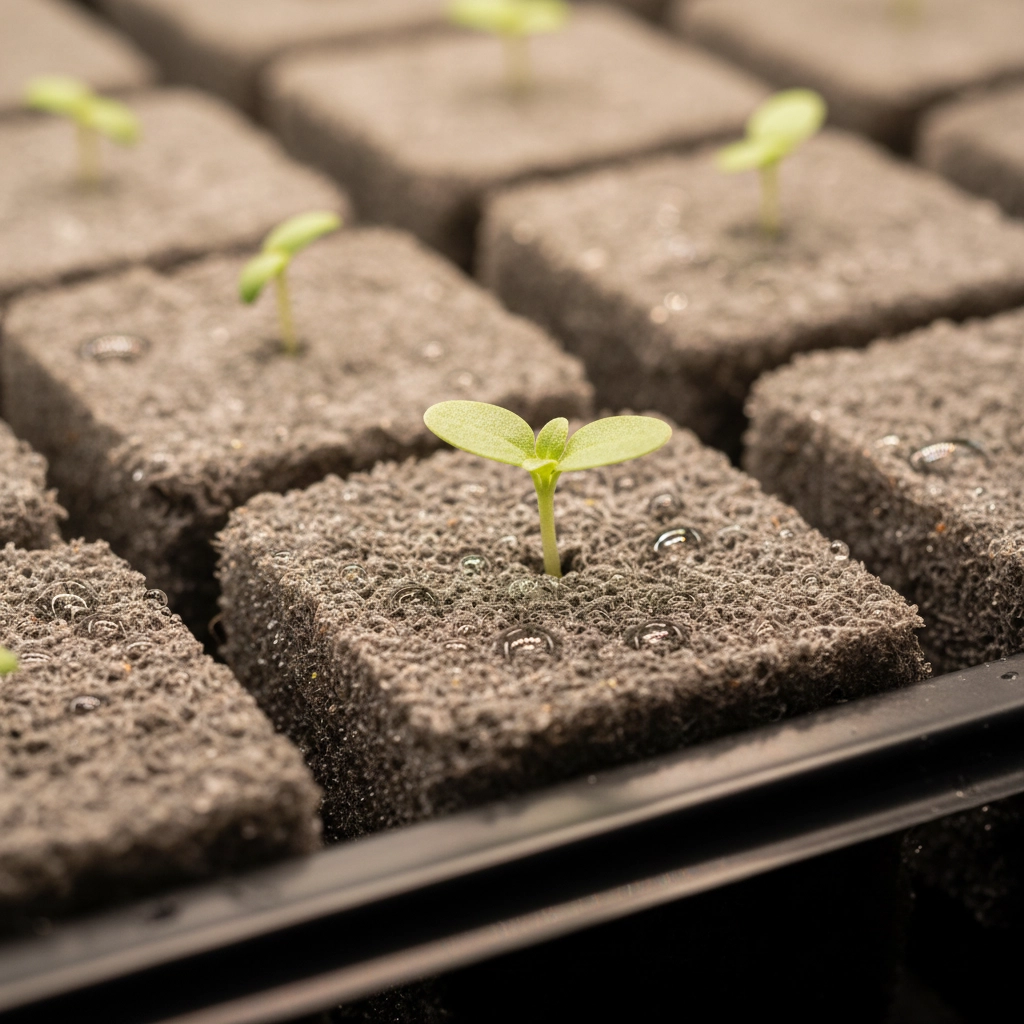
Optimal Growing Parameters
pH Management is crucial for nutrient uptake. Maintain your nutrient solution between pH 5.5-6.5. Basil tolerates slight pH fluctuations, but staying within this range ensures optimal nutrient availability. Check pH daily and adjust using pH up or pH down solutions as needed.
Electrical Conductivity (EC) should range from 1.0-1.6 for mature basil plants. Start seedlings at lower EC levels around 0.8-1.0 and gradually increase as plants establish. Higher EC levels may cause leaf burn, while lower levels result in weak growth.
Nutrient Requirements: Basil thrives on balanced nutrition with emphasis on nitrogen for leaf development, phosphorus for root growth, and potassium for overall plant health. Use quality hydroponic nutrients designed for leafy greens, and consider supplementing with calcium and magnesium if using soft water.
Lighting Requirements
Basil needs 12-16 hours of light daily for optimal growth. LED grow lights positioned 12-18 inches above plant canopy provide excellent results while remaining energy efficient.
Light Intensity: Aim for 25-35 DLI (Daily Light Integral) for mature plants. Young seedlings require less intense lighting initially, around 15-20 DLI.
Light Spectrum: Full spectrum LED lights work best, but basil responds particularly well to lights with strong blue and red components. Blue light promotes compact, bushy growth while red encourages flowering (which you’ll want to control).
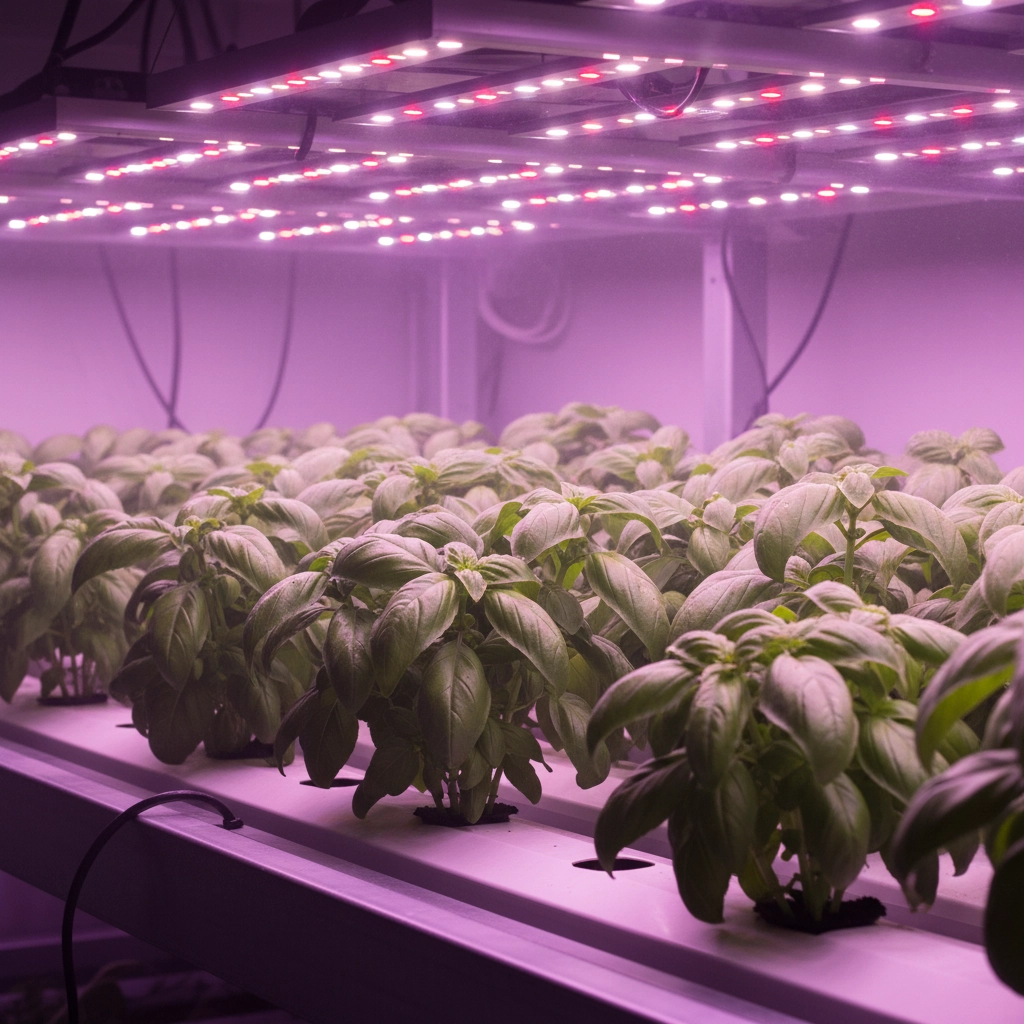
Plant Spacing and Training
Space basil plants 6-8 inches apart in most hydroponic systems. Closer spacing works for baby leaf production, while wider spacing allows for larger, bushier plants.
Pruning and Training: Begin pruning when plants reach 6 inches tall and develop 4-6 sets of leaves. Pinch out the growing tip just above a leaf node to encourage branching. This creates bushier plants with more harvesting points.
Flower Management: Remove flower buds immediately when they appear. Flowering redirects energy away from leaf production and makes leaves bitter. Regular harvesting and pruning help prevent flowering.
Water and System Management
Water Quality: Use filtered or RO water when possible, especially in areas with hard water. High mineral content in tap water can interfere with nutrient uptake and cause pH instabilities.
Reservoir Management: Change nutrient solutions every 1-2 weeks depending on plant size and consumption. Top off with fresh water between changes, monitoring EC levels to maintain proper concentration.
Temperature Control: Keep nutrient solution temperatures between 65-75°F. Warmer temperatures reduce oxygen levels and promote root rot, while cooler temperatures slow growth.
Harvesting Your Hydroponic Basil
Start harvesting when plants are 6-8 weeks old and have developed sufficient leaf mass. Cut stems just above a leaf node to encourage continued growth from that point.
Continuous Harvest Method: Take no more than 1/3 of the plant at any single harvest. This allows the plant to recover quickly and continue producing. Harvest frequently to maintain tender leaves and prevent flowering.
Best Harvesting Time: Harvest in the morning after lights have been on for a few hours but before the heat of the day. Leaves have maximum essential oil content and will stay fresh longer.
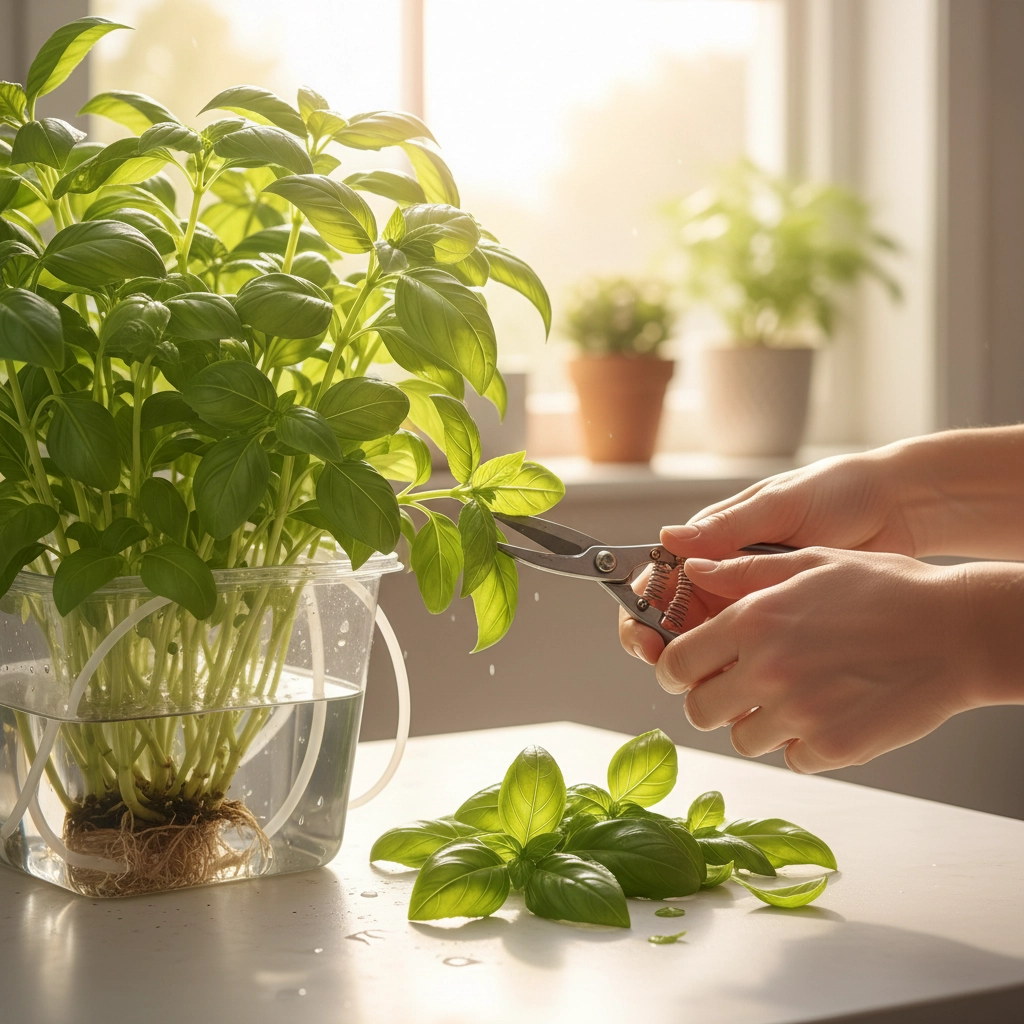
Common Issues and Solutions
Leaf yellowing often indicates nutrient deficiency, typically nitrogen. Check your EC levels and ensure your nutrient solution is fresh and properly mixed.
Brown leaf tips suggest nutrient burn from excessive EC levels or pH problems. Reduce nutrient concentration and check pH stability.
Wilting despite adequate water may indicate root problems. Check for root rot, ensure proper oxygenation, and verify water temperatures aren’t too high.
Quick Reference Grow Card
| Growing Parameter | Optimal Range |
|---|---|
| pH Level | 5.5 – 6.5 |
| EC Level | 1.0 – 1.6 |
| Water Temperature | 65 – 75°F |
| Air Temperature | 70 – 80°F |
| Lighting Hours | 12 – 16 hours |
| Light Distance | 12 – 18 inches |
| Seed Depth | ¼ inch |
| Plant Spacing | 6 – 8 inches |
| Germination Time | 5 – 10 days |
| Harvest Time | 6 – 8 weeks |
| Key Nutrients | N-P-K + Ca, Mg |
Growing hydroponic basil successfully comes down to maintaining consistent conditions and staying attentive to your plants’ needs. With proper setup and regular monitoring, you’ll enjoy abundant harvests of fresh, flavorful basil that far exceeds anything you can buy in stores. The controlled environment of hydroponics allows you to optimize every aspect of growth, resulting in superior quality herbs year-round.
